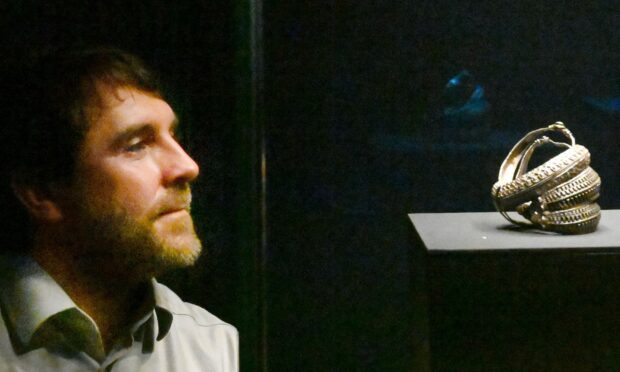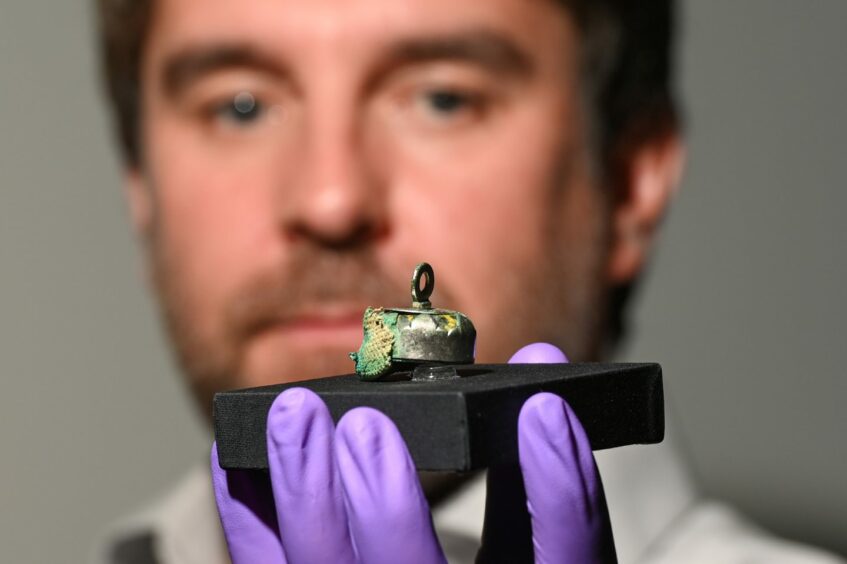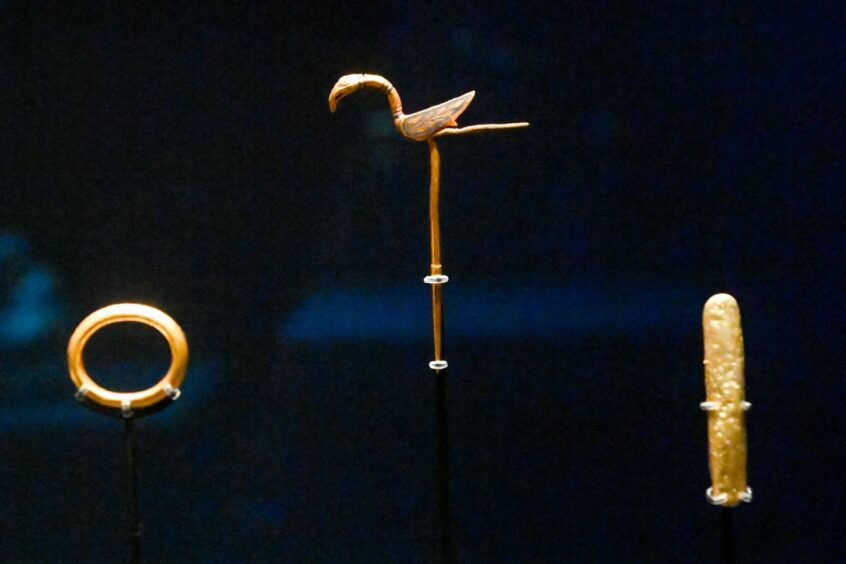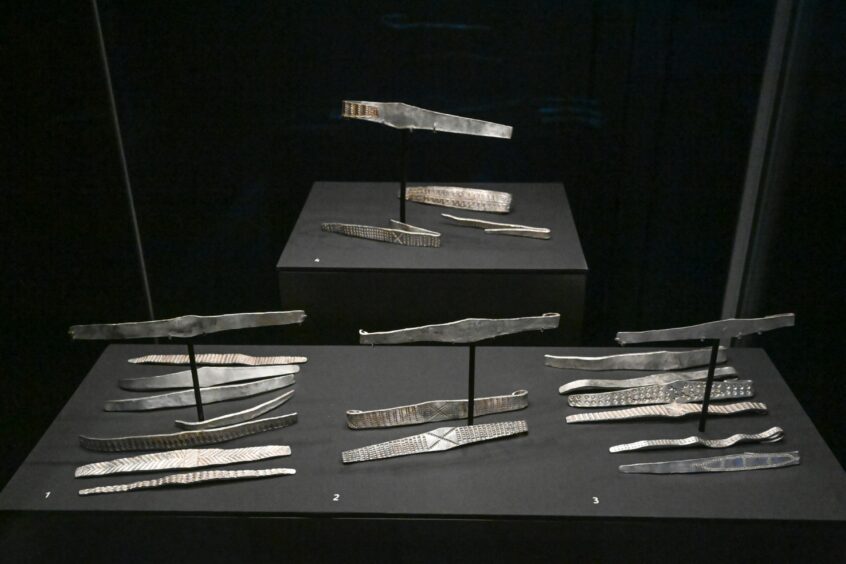The Galloway Hoard – one of the most important UK archaeological finds of the century – will go on display at Aberdeen Art Gallery this weekend, unveiling recent discoveries for the first time.
The hoard, buried around AD900, is the richest collection of rare and unique Viking-age objects ever found in Britain or Ireland. It brings together a stunning variety of objects and materials in one discovery.
And the story behind the unique find is just as fascinating as the items and replicas that will go on display in Aberdeen on Saturday July 30.
Retired businessman and metal detector enthusiast Derek McLennan stumbled upon the treasure in 2014 when he was scanning an area of church land in Dumfries and Galloway with two local ministers.
What they initially thought was a silver spoon turned out to be an arm ring and was quickly followed by more artefacts.
Galloway Hoard: Viking-age treasure to go on display in Aberdeen
The exhibition, Galloway Hoard: Viking-age treasure, offers the first chance to see details hidden for over a thousand years, revealed by conservation and painstaking cleaning.
In recent months, the ongoing research unveiled even more fascinating discoveries. Those who visit the Art Gallery exhibition will be the first to see images of newly revealed gold filigree (intricate metalwork) objects from the hoard.
New insights into the rich variety of textiles found in the Galloway Hoard will also be unveiled.
“It’s the variety of materials that were in this hoard that makes it different to what you normally find in a Viking-age hoard,” explained Dr Martin Goldberg, principal curator of medieval history and archaeology at National Museums Scotland.
Range of unusual materials is what makes Galloway hoard unique
“The lidded vessel sits at the heart of the exhibit and it’s packed full of a whole range of unusual materials that you wouldn’t normally find. They are materials that we wouldn’t really consider valuable – so things like glass.
“But these glass beads look like heirlooms – they are things that were probably circulating for several centuries before they were buried and restored.
“The Galloway Hoard discovery has a time depth to it that other hoards don’t. It brings to mind things like family connections. This might be the equivalent of your grandmother’s pearls.
“These beads would have been worn by somebody – but the age of them suggests that they had been handed down generation after generation before they were then buried in about AD 900, but they may be several centuries old.”
In addition to beads, the vessel also included pendants, brooches, and bracelets, often wrapped with silk.
Detailed photos, videos and 3D models also on display
Since some items are too fragile to be displayed, the exhibition also uses AV and 3D reconstruction to enable visitors to understand these objects and the ongoing research.
The Arts and Humanities Research Council has awarded support for a £1m, three-year research project, Unwrapping The Galloway Hoard, led by National Museums Scotland in partnership with the University Of Glasgow.
The Galloway Hoard will eventually go on long-term display at the National Museum in Scotland in Edinburgh, with a portion of the exhibition also travelling to Kirkcudbright Galleries.
The Galloway Hoard: Viking-age treasure exhibition is at Aberdeen Art Gallery from Saturday July 30 until Sunday October 23.




Conversation